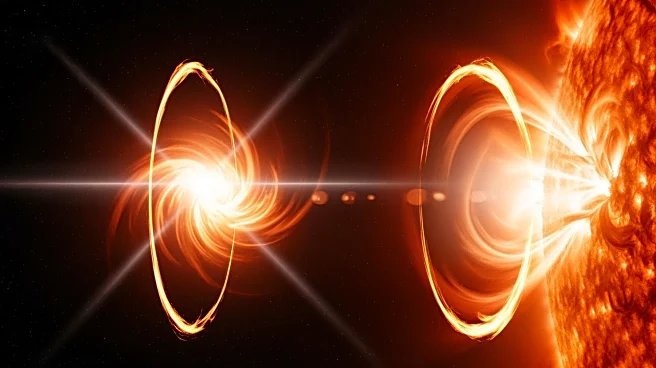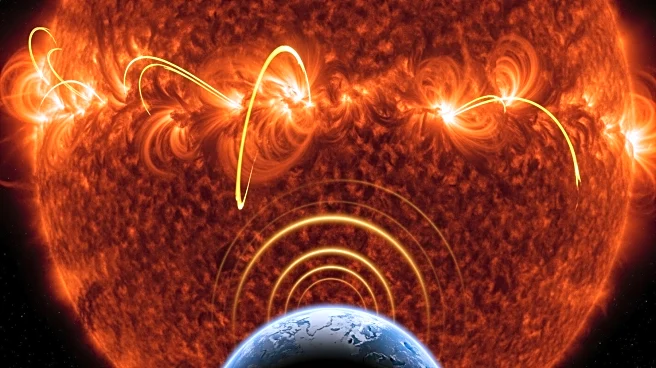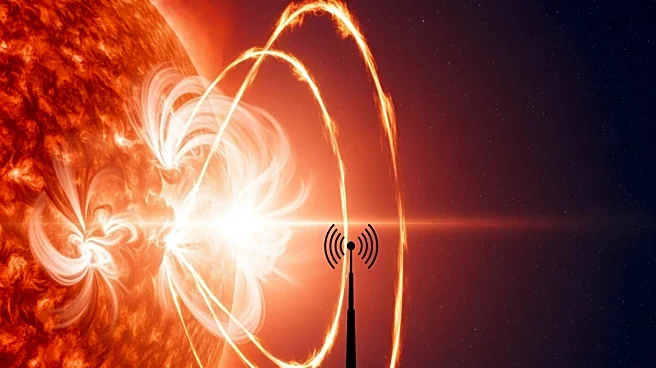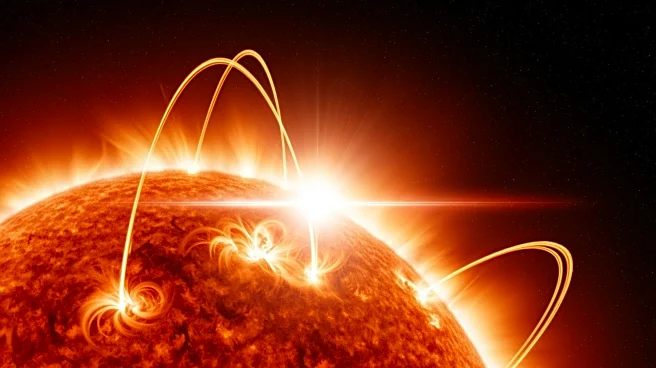What's Happening?
On November 14, the sun emitted a powerful X4-class flare, causing significant radio blackouts on Earth. The flare originated from sunspot AR4274 and reached its peak intensity at 3:30 am EST. The event
led to an R3-level radio blackout, particularly affecting central and eastern Africa. A coronal mass ejection (CME) accompanied the flare, but due to the sunspot's position, a direct impact on Earth is unlikely. Solar flares are classified by intensity, with X-class being the most powerful.
Why It's Important?
Solar flares can disrupt communication systems, navigation, and power grids, posing challenges for technology-dependent societies. The recent flare highlights the need for robust space weather monitoring and preparedness to mitigate potential impacts on critical infrastructure. Understanding solar activity is crucial for predicting and managing its effects on Earth, especially as reliance on technology continues to grow.
What's Next?
Space weather experts are analyzing data to assess the potential impact of the CME on Earth. Continued monitoring of sunspot AR4274 is essential to anticipate further solar activity. The event may prompt increased investment in space weather prediction technologies and strategies to protect communication and power systems from solar disruptions.











